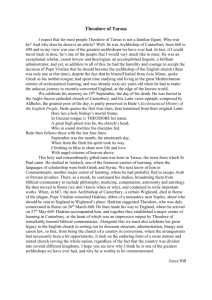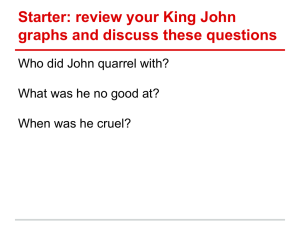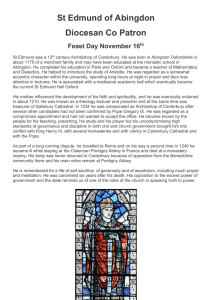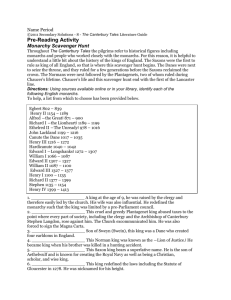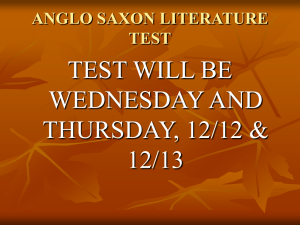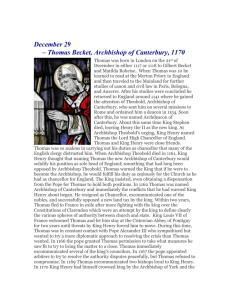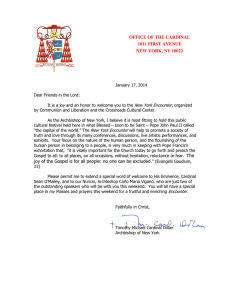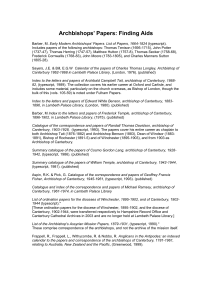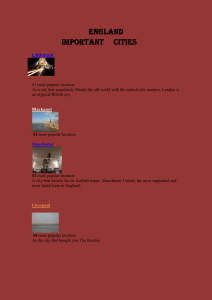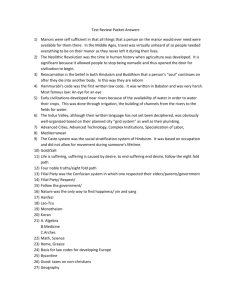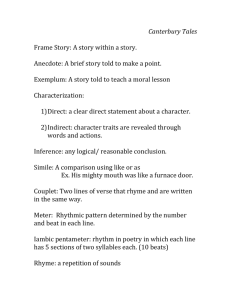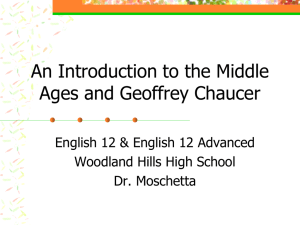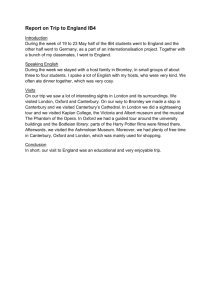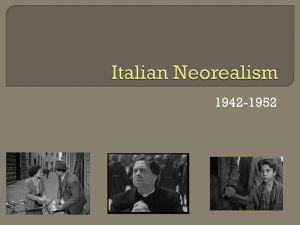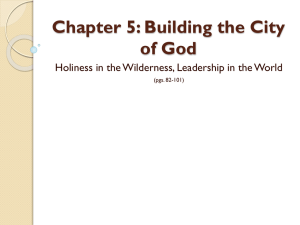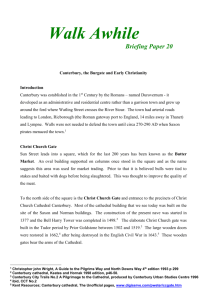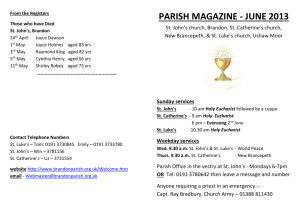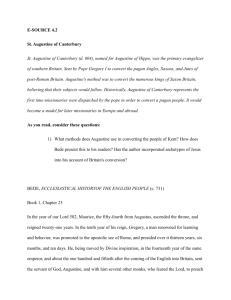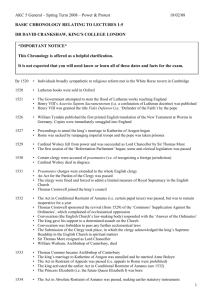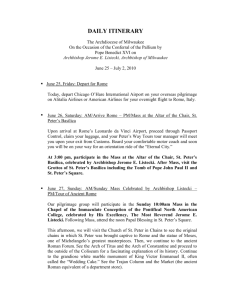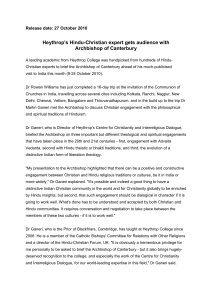Speech by Colin Carmichael to Via Francigena Conference at
advertisement
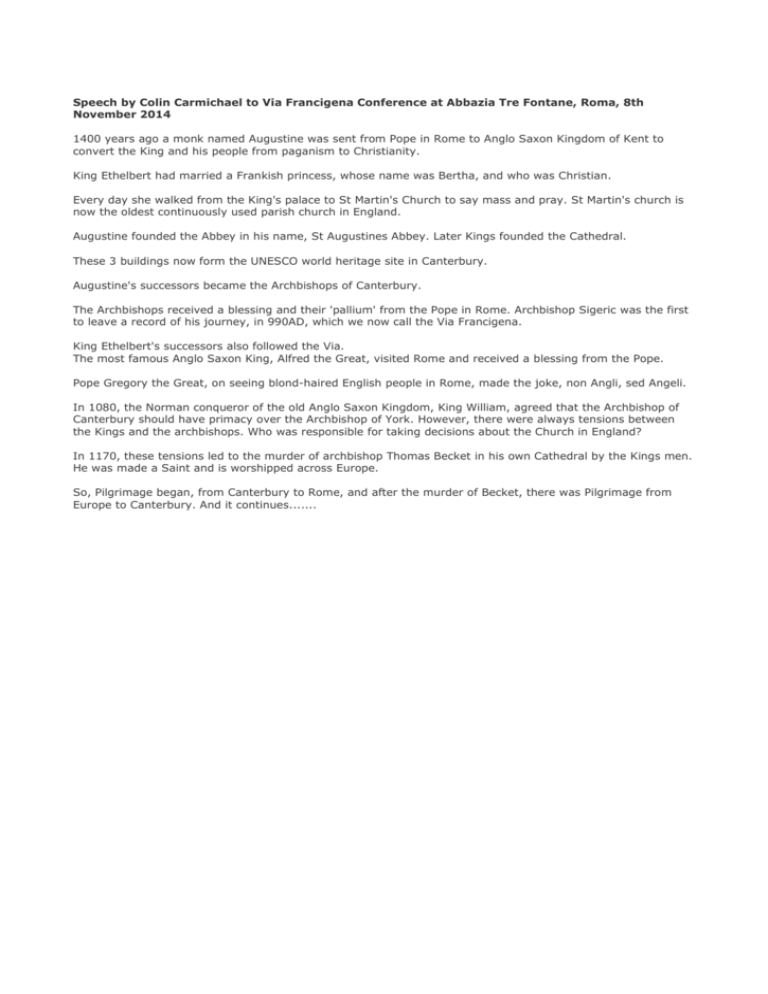
Speech by Colin Carmichael to Via Francigena Conference at Abbazia Tre Fontane, Roma, 8th November 2014 1400 years ago a monk named Augustine was sent from Pope in Rome to Anglo Saxon Kingdom of Kent to convert the King and his people from paganism to Christianity. King Ethelbert had married a Frankish princess, whose name was Bertha, and who was Christian. Every day she walked from the King's palace to St Martin's Church to say mass and pray. St Martin's church is now the oldest continuously used parish church in England. Augustine founded the Abbey in his name, St Augustines Abbey. Later Kings founded the Cathedral. These 3 buildings now form the UNESCO world heritage site in Canterbury. Augustine's successors became the Archbishops of Canterbury. The Archbishops received a blessing and their 'pallium' from the Pope in Rome. Archbishop Sigeric was the first to leave a record of his journey, in 990AD, which we now call the Via Francigena. King Ethelbert's successors also followed the Via. The most famous Anglo Saxon King, Alfred the Great, visited Rome and received a blessing from the Pope. Pope Gregory the Great, on seeing blond-haired English people in Rome, made the joke, non Angli, sed Angeli. In 1080, the Norman conqueror of the old Anglo Saxon Kingdom, King William, agreed that the Archbishop of Canterbury should have primacy over the Archbishop of York. However, there were always tensions between the Kings and the archbishops. Who was responsible for taking decisions about the Church in England? In 1170, these tensions led to the murder of archbishop Thomas Becket in his own Cathedral by the Kings men. He was made a Saint and is worshipped across Europe. So, Pilgrimage began, from Canterbury to Rome, and after the murder of Becket, there was Pilgrimage from Europe to Canterbury. And it continues.......
